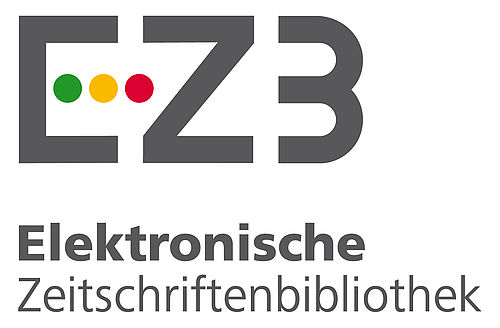Abstract
Keywords
Genista G. carinalis Anticholinesterase activity Butyrylcholinesterase activity TEAC α-Amylase.
Project Number
NKUBAP.01.DR.22.352
References
- 1. Amarowicz, R., Karamać, M., Weidner, S., Abe, S., Shahidi, F. (2002). Antioxidant activity of wheat caryopses and embryos extracts. Journal of Food Lipids, 9, 201-210. https://doi.org/10.1111/j.1745-4522.2002.tb00219.x
- 2. Apak, R., Güçlü, K., Özyürek, M., Karademir, S.E. (2004). Novel total antioxidant capacity index for dietary polyphenols and vitamin C and E, using their cupric ion reducing capability in the presence of neocuproine: CUPRAC Method. Journal of Agricultural and Food Chemistry, 52, 7970-7981. https://doi.org/10.1021/jf048741x
- 3. Batista, D., Fale, P. L., Serralheiro, M. L., Araujo, M. E., Madeira, P. J. A., Borges, C., Torgal, I., Goulart, M., Justino, J., Martins, A., Rauter, A. P. (2015). New in vitro studies on the bioprofile of Genista tenera antihyperglycemic extract. Natural Products and Bioprospecting, 5, 277-285. https://doi.org/10.1007/s13659-015-0077-z
- 4. Boukaabache, R., Boubekri, N., Boumaza, O., Mekkiou, R., Seghiri, R., Sarri, D., Zama, D., Benayache, F. and Benayache S. (2013). Phytochemical study of ethyl acetate extract and antioxidant activity of Genista quadriflora Munby (Fabaceae). Der Pharmacia Lettre, 5, 56-59.
- 5. Benzie, I.F.F., Strain, J.J. (1996) The ferric reducing ability of plasma (FRAP) as a measure of antioxidant power, the FRAP assay. Analytical Biochemistry, 239, 70-76. https://doi.org/10.1006/abio.1996.0292
- 6. Bontempo, P., Rigano, D., Doto, A., Formisano, C., Conte, M., Nebbioso, A., Carafa, V., Caserta, G., Sica, V., Molinari, A.M., Altucci, L. (2013). Genista sessilifolia DC. extracts induce apoptosis across a range of cancer cell lines. Cell Proliferation, 46, 183-192. https://doi.org/10.1111/cpr.12022
- 7. Craig, W.J. (1999). Health-promoting properties of common herbs. American Journal of Clinical Nutrition, 70, 491-499. https://doi.org/10.1093/ajcn/70.3.491s
- 8. Dorman, H.J.D., Peltoketo, A., Hiltunen, R., Tikkanen, M.J. (2003). Characterisation of the antioxidant properties of deodourised aqueous extracts from selected Lamiaceae herbs. Food Chemistry 83, 255-262. https://doi.org/10.1016/S0308-8146(03)00088-8
- 9. Ellman, G.L., Courtney, K.D., Andres, V., Featherston, R.M. (1961). A new and rapid colorimetric determination of acetylcholinesterase activity. Biochemical Pharmacology, 7, 88-95. https://doi.org/10.1016/0006-2952(61)90145-9
- 10. Hasan, M.M., Ahmed, Q.U., Soad, S.Z.M., Tunna, T.S. (2001). Animal models and natural products to investigate in vivo and in vitro antidiabetic activity. Biomedicine & Pharmacotherapy, 101, 833-841. https://doi.org/10.1016/j.biopha.2018.02.137
- 11. Herbert, L.E., Scherr, P.A., Beckeff, L.A. (1995) Age-specific incidence of Alzheimer’s Disease in a community population. JAMA, 273, 1354-1359. https://doi.org/ 10.1001/jama.1995.03520410048025 12. Jain, C., Khatana, S., Vijayvergia, R. (2019). Bioactivity of secondary metabolites of various plants: A review. International Journal of Pharmaceutical Sciences and Research, 10, 494-504. https://doi.org/10.13040/IJPSR.0975-8232.10(2).494-04
- 13. Kim, J.S., Kwon, C.S., Son, K.H. (2010). Inhibition of α-glucosidase and amylase by luteolin, a flavonoid. Bioscience, Biotechnology and Biochemistry, 64, 2458-2461. https://doi.org/10.1271/bbb.64.2458
- 14. Noccioli, C., Meini, L., Loi, C.M., Potenza, D., Pistelli, L. (2011). A new alpinumisoflavone derivative from Genista pichisermolliana. Phytochemistry Letters, 4, 342-344. https://doi.org/10.1016/j.phytol.2011.07.005
- 15. Meriane, D., Genta-Jouve, G., Kaabeche, M., Michel, S., Boutefnouchet, S. (2014). Rapid identification of antioxidant compounds of Genista saharae Coss. & Dur. By combination of DPPH scavenging assay and HPTLC-MS. Molecules, 19, 4369-4379. https://doi.org/10.3390/molecules19044369
- 16. Orhan, I., Sener, B., Choudhary, M.I., Khalid, A. (2004). Acetylcholinesterase and butyrylcholinesterase inhibitory activity of some Turkish medicinal plants. Journal of Ethnopharmacology, 91, 57-60. https://doi.org/10.1016/j.jep.2003.11.016
- 17. Ozturk, M., Kolak, U., Topçu, G., Oksüz, S., Choudhary, M.I. (2011). Antioxidant and anticholinesterase active constituents from Micromeria cilicica by radical-scavenging activity-guided fractionation. Food Chemistry, 126, 31-38. https://doi.org/10.1016/j.foodchem.2010.10.050
- 18. Rainova, L., Nakov, N. (1988). Ulceroprotective activity of the flavonoids of Genista rumelica Vel. Phytotherapy Research, 2, 137-139. https://doi.org/10.1002/ptr.2650020307
- 19. Rauter, A.P., Martins, A., Lopes, R., Ferreira, J., Serralheiro, L.M., Araújo, M., Borges, C., Justinob, J., Silvab, F.V., Goulartb, M., Thomas-Oatesc, J., Rodriguesc, J.A., Edwardsc, E., Noronhad, J.P., Pintoe, R., Mota-Filipe, H. (2009). Bioactivity studies and chemical profile of the antidiabetic plant Genista tenera. Journal of Ethnopharmacology, 122, 384-393. https://doi.org/10.1016/j.jep.2008.10.011
- 20. Re, R., Pellegrini, N., Proteggente, A., Pannala, A., Yang, M., Rice-Evans, C. (1999). Antioxidant activity applying an improved ABTS radical cation decolorization assay. Free Radical Biology and Medicine, 26, 1231-1237. https://doi.org/10.1016/S0891-5849(98)00315-3
- 21. Sabudak, T., Caliskan, H., Orak, H.H., Ozer, M. (2021). Biological activity of new flavonoids and phenolic compounds from Cirsium italicum (Savi) DC. Natural Product Research, 35(10), 1613-1619. https://doi.org/10.1080/14786419.2019.1630121
- 22. Shaw, J.E., Sicree, R.A., Zimmet, P.Z. (2010). Global estimates of the prevalence of diabetes for 2010 and 2030. Diabetes Research and Clinical Practice, 7, 4-14. https://doi.org/10.1016/j.diabres.2009.10.007
- 23. Talesa, V.N. (2001). Acetylcholinesterase in Alzheimer’s disease. Mechanisms of Ageing and Development, 122, 1961-1969. https://doi.org/10.1016/s0047-6374(01)00309-8
- 24. World Health Organization (WHO) (2020). Dementia. https://www.who.int/news-room/fact-sheets/detail/deme
Anticholinesterase, Antidiabetic and Antioxidant Activities of Chloroform Extract of Genista carinalis
Abstract
Alzheimer's disease, diabetes has become an increasing public health issues in recent years. On the other hand, synthetic drugs are expensive, could be inadequate to treat diseases, could be cause irritation, and side effects. Therefore, increasingly more researchis being done to plant-derived formulas, bioactive ingredients, which can be an alternative to synthetic drugs for treatments to solve basic health problems. In this study the antioxidant, anticholinesterase and antidiabetic activities of G. carinalis in the chloroform extract were determined. Based on the results, the extract was not observed inhibitory activities of α-glucosidase and α-amylase. It showed better activity for acetylcholiesterase activity than the butylrylcholinesterase activity. The antioxidant potential of G. carinalis chloroform extract was determined with different assays. The TEAC value was determined to be 0.484 mmol TE/g, FRAP value was found to be 1023.20 µmol Fe2+/g for G. carinalis chloroform extract. The EC50 value of DPPH assays for extract was found to be 0.101 μg/ml.
Keywords
Genista G. carinalis Anticholinesterase activity Butyrylcholinesterase activity TEAC α-Amylase.
Supporting Institution
Scientific Research Projects Coordination Unit of Tekirdag Namik Kemal University
Project Number
NKUBAP.01.DR.22.352
References
- 1. Amarowicz, R., Karamać, M., Weidner, S., Abe, S., Shahidi, F. (2002). Antioxidant activity of wheat caryopses and embryos extracts. Journal of Food Lipids, 9, 201-210. https://doi.org/10.1111/j.1745-4522.2002.tb00219.x
- 2. Apak, R., Güçlü, K., Özyürek, M., Karademir, S.E. (2004). Novel total antioxidant capacity index for dietary polyphenols and vitamin C and E, using their cupric ion reducing capability in the presence of neocuproine: CUPRAC Method. Journal of Agricultural and Food Chemistry, 52, 7970-7981. https://doi.org/10.1021/jf048741x
- 3. Batista, D., Fale, P. L., Serralheiro, M. L., Araujo, M. E., Madeira, P. J. A., Borges, C., Torgal, I., Goulart, M., Justino, J., Martins, A., Rauter, A. P. (2015). New in vitro studies on the bioprofile of Genista tenera antihyperglycemic extract. Natural Products and Bioprospecting, 5, 277-285. https://doi.org/10.1007/s13659-015-0077-z
- 4. Boukaabache, R., Boubekri, N., Boumaza, O., Mekkiou, R., Seghiri, R., Sarri, D., Zama, D., Benayache, F. and Benayache S. (2013). Phytochemical study of ethyl acetate extract and antioxidant activity of Genista quadriflora Munby (Fabaceae). Der Pharmacia Lettre, 5, 56-59.
- 5. Benzie, I.F.F., Strain, J.J. (1996) The ferric reducing ability of plasma (FRAP) as a measure of antioxidant power, the FRAP assay. Analytical Biochemistry, 239, 70-76. https://doi.org/10.1006/abio.1996.0292
- 6. Bontempo, P., Rigano, D., Doto, A., Formisano, C., Conte, M., Nebbioso, A., Carafa, V., Caserta, G., Sica, V., Molinari, A.M., Altucci, L. (2013). Genista sessilifolia DC. extracts induce apoptosis across a range of cancer cell lines. Cell Proliferation, 46, 183-192. https://doi.org/10.1111/cpr.12022
- 7. Craig, W.J. (1999). Health-promoting properties of common herbs. American Journal of Clinical Nutrition, 70, 491-499. https://doi.org/10.1093/ajcn/70.3.491s
- 8. Dorman, H.J.D., Peltoketo, A., Hiltunen, R., Tikkanen, M.J. (2003). Characterisation of the antioxidant properties of deodourised aqueous extracts from selected Lamiaceae herbs. Food Chemistry 83, 255-262. https://doi.org/10.1016/S0308-8146(03)00088-8
- 9. Ellman, G.L., Courtney, K.D., Andres, V., Featherston, R.M. (1961). A new and rapid colorimetric determination of acetylcholinesterase activity. Biochemical Pharmacology, 7, 88-95. https://doi.org/10.1016/0006-2952(61)90145-9
- 10. Hasan, M.M., Ahmed, Q.U., Soad, S.Z.M., Tunna, T.S. (2001). Animal models and natural products to investigate in vivo and in vitro antidiabetic activity. Biomedicine & Pharmacotherapy, 101, 833-841. https://doi.org/10.1016/j.biopha.2018.02.137
- 11. Herbert, L.E., Scherr, P.A., Beckeff, L.A. (1995) Age-specific incidence of Alzheimer’s Disease in a community population. JAMA, 273, 1354-1359. https://doi.org/ 10.1001/jama.1995.03520410048025 12. Jain, C., Khatana, S., Vijayvergia, R. (2019). Bioactivity of secondary metabolites of various plants: A review. International Journal of Pharmaceutical Sciences and Research, 10, 494-504. https://doi.org/10.13040/IJPSR.0975-8232.10(2).494-04
- 13. Kim, J.S., Kwon, C.S., Son, K.H. (2010). Inhibition of α-glucosidase and amylase by luteolin, a flavonoid. Bioscience, Biotechnology and Biochemistry, 64, 2458-2461. https://doi.org/10.1271/bbb.64.2458
- 14. Noccioli, C., Meini, L., Loi, C.M., Potenza, D., Pistelli, L. (2011). A new alpinumisoflavone derivative from Genista pichisermolliana. Phytochemistry Letters, 4, 342-344. https://doi.org/10.1016/j.phytol.2011.07.005
- 15. Meriane, D., Genta-Jouve, G., Kaabeche, M., Michel, S., Boutefnouchet, S. (2014). Rapid identification of antioxidant compounds of Genista saharae Coss. & Dur. By combination of DPPH scavenging assay and HPTLC-MS. Molecules, 19, 4369-4379. https://doi.org/10.3390/molecules19044369
- 16. Orhan, I., Sener, B., Choudhary, M.I., Khalid, A. (2004). Acetylcholinesterase and butyrylcholinesterase inhibitory activity of some Turkish medicinal plants. Journal of Ethnopharmacology, 91, 57-60. https://doi.org/10.1016/j.jep.2003.11.016
- 17. Ozturk, M., Kolak, U., Topçu, G., Oksüz, S., Choudhary, M.I. (2011). Antioxidant and anticholinesterase active constituents from Micromeria cilicica by radical-scavenging activity-guided fractionation. Food Chemistry, 126, 31-38. https://doi.org/10.1016/j.foodchem.2010.10.050
- 18. Rainova, L., Nakov, N. (1988). Ulceroprotective activity of the flavonoids of Genista rumelica Vel. Phytotherapy Research, 2, 137-139. https://doi.org/10.1002/ptr.2650020307
- 19. Rauter, A.P., Martins, A., Lopes, R., Ferreira, J., Serralheiro, L.M., Araújo, M., Borges, C., Justinob, J., Silvab, F.V., Goulartb, M., Thomas-Oatesc, J., Rodriguesc, J.A., Edwardsc, E., Noronhad, J.P., Pintoe, R., Mota-Filipe, H. (2009). Bioactivity studies and chemical profile of the antidiabetic plant Genista tenera. Journal of Ethnopharmacology, 122, 384-393. https://doi.org/10.1016/j.jep.2008.10.011
- 20. Re, R., Pellegrini, N., Proteggente, A., Pannala, A., Yang, M., Rice-Evans, C. (1999). Antioxidant activity applying an improved ABTS radical cation decolorization assay. Free Radical Biology and Medicine, 26, 1231-1237. https://doi.org/10.1016/S0891-5849(98)00315-3
- 21. Sabudak, T., Caliskan, H., Orak, H.H., Ozer, M. (2021). Biological activity of new flavonoids and phenolic compounds from Cirsium italicum (Savi) DC. Natural Product Research, 35(10), 1613-1619. https://doi.org/10.1080/14786419.2019.1630121
- 22. Shaw, J.E., Sicree, R.A., Zimmet, P.Z. (2010). Global estimates of the prevalence of diabetes for 2010 and 2030. Diabetes Research and Clinical Practice, 7, 4-14. https://doi.org/10.1016/j.diabres.2009.10.007
- 23. Talesa, V.N. (2001). Acetylcholinesterase in Alzheimer’s disease. Mechanisms of Ageing and Development, 122, 1961-1969. https://doi.org/10.1016/s0047-6374(01)00309-8
- 24. World Health Organization (WHO) (2020). Dementia. https://www.who.int/news-room/fact-sheets/detail/deme
Details
| Primary Language | English |
|---|---|
| Journal Section | Research Article |
| Authors | |
| Project Number | NKUBAP.01.DR.22.352 |
| Early Pub Date | May 12, 2023 |
| Publication Date | July 2, 2023 |
| Published in Issue | Year 2023 Volume: 6 Issue: 1 |
-------------------------------------------------------------------------------------------------------------------------------













-------------------------------------------------------------------------------------------------------------------------
 CUPMAP Journal is licensed under a Creative Commons Attribution-NonCommercial-NoDerivatives 4.0 International License.
CUPMAP Journal is licensed under a Creative Commons Attribution-NonCommercial-NoDerivatives 4.0 International License.
-----------------------------------------------------------------------------------------------------------------------------------------
This is an open access journal which means that all content is freely available without charge to the user or his/her institution. Users are allowed to read, download, copy, distribute, print, search, or link to the full texts of the articles, or use them for any other lawful purpose, without asking prior permission from the publisher or the author. This is in accordance with the BOAI definition of open access.
